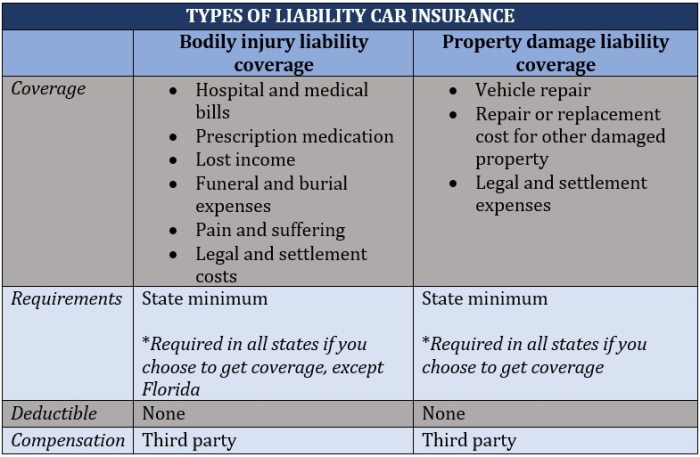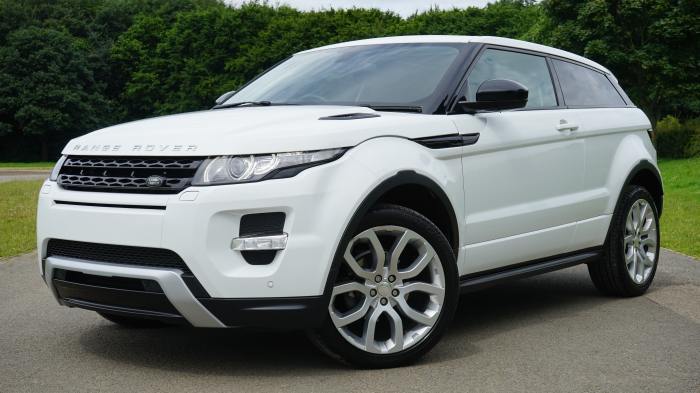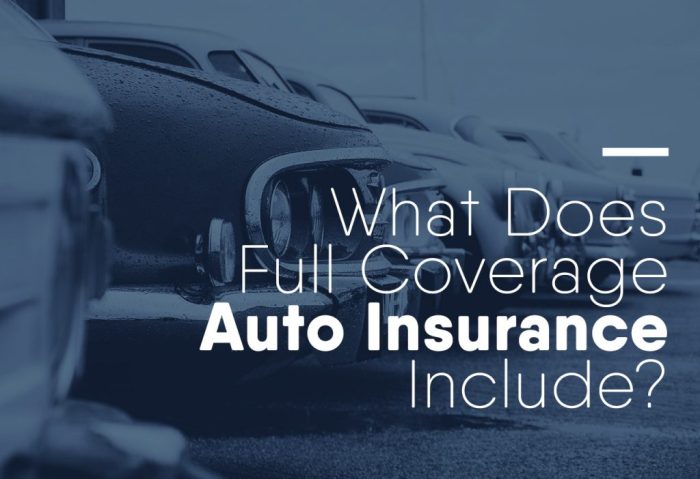Securing your financial well-being after an auto accident is paramount. Auto full coverage insurance offers a safety net, protecting you from significant financial burdens following collisions, theft, or other unforeseen events. This guide delves into the intricacies of auto full coverage, explaining its components, cost factors, and the crucial decisions involved in selecting the right policy for your needs.
Navigating the world of car insurance can feel overwhelming, especially when considering the various coverage options available. This comprehensive guide aims to demystify auto full coverage insurance, providing clarity on its benefits, limitations, and the steps to securing optimal protection at a manageable cost. We’ll explore key aspects, from understanding policy components to navigating the claims process, empowering you to make informed decisions about your auto insurance.
Defining “Auto Full Coverage Insurance”

Auto full coverage insurance is a comprehensive insurance policy designed to protect you from a wide range of potential financial losses related to your vehicle. Unlike other types of car insurance, it goes beyond the minimum legal requirements, offering more extensive protection for both you and your car. Understanding the nuances of full coverage is crucial for making informed decisions about your auto insurance needs.
Full coverage insurance typically bundles several types of coverage together, providing a more complete safety net. This comprehensive approach offers peace of mind knowing you’re protected against a broader spectrum of risks compared to more limited policies.
Components of a Full Coverage Policy
A typical full coverage policy includes several key components. These components work together to provide broad protection against various scenarios. The specific coverage details and limits can vary based on your insurer and the chosen policy.
- Collision Coverage: This covers damage to your vehicle caused by a collision with another vehicle or object, regardless of fault. For example, if you hit a deer or another car, collision coverage would help pay for repairs or replacement.
- Comprehensive Coverage: This covers damage to your vehicle caused by events other than collisions, such as theft, vandalism, fire, hail, or falling objects. Imagine a tree branch falling on your car; comprehensive coverage would address the resulting damage.
- Liability Coverage: This covers bodily injury or property damage you cause to others in an accident. This is usually legally mandated and covers medical bills and vehicle repairs for the other party involved.
- Uninsured/Underinsured Motorist Coverage: This protects you if you’re involved in an accident with an uninsured or underinsured driver. It covers your medical bills and vehicle repairs even if the other driver is at fault and lacks sufficient insurance.
- Personal Injury Protection (PIP): This covers your medical expenses and lost wages regardless of fault. It can also cover medical expenses for your passengers. For example, if you are injured in an accident, PIP would help pay for your medical treatment.
Full Coverage vs. Liability-Only Insurance
The primary difference between full coverage and liability-only insurance lies in the extent of protection offered. Liability-only insurance, often the minimum required by law, only covers damages you cause to others. It does not cover damage to your own vehicle. Full coverage, on the other hand, provides broader protection, covering damages to your vehicle and offering additional benefits like comprehensive and collision coverage.
For example, if you’re involved in an accident that is your fault, liability-only insurance would only cover the damages to the other person’s vehicle and their injuries. Your own vehicle repair costs would be your responsibility. With full coverage, your vehicle repairs would also be covered. Choosing between full coverage and liability-only insurance is a personal decision based on factors such as the age and value of your vehicle, your financial situation, and your risk tolerance. A newer, more expensive vehicle would typically benefit more from full coverage insurance.
Coverage Details and Policy Exclusions

Understanding the specifics of your auto full coverage insurance policy is crucial. While the term “full coverage” suggests comprehensive protection, it’s essential to know precisely what’s included and, equally important, what’s excluded. This knowledge empowers you to make informed decisions and avoid unexpected costs.
A typical full coverage auto insurance policy bundles several key coverages to protect you against various risks. These coverages work together to provide a comprehensive safety net, but each has its own limitations and exclusions.
Included Coverages in a Full Coverage Policy
Full coverage policies typically include collision, comprehensive, liability, and uninsured/underinsured motorist coverage. These components address different types of accidents and damages. The specific details and limits of each coverage are Artikeld in your policy documents.
- Collision Coverage: Pays for repairs or replacement of your vehicle if it’s damaged in an accident, regardless of fault. This includes collisions with other vehicles, objects, or even rollovers.
- Comprehensive Coverage: Covers damage to your vehicle caused by events other than collisions, such as theft, vandalism, fire, hail, or damage from animals. It also often includes coverage for glass breakage.
- Liability Coverage: Protects you financially if you cause an accident that injures someone or damages their property. This coverage pays for the other party’s medical bills, lost wages, and property repairs.
- Uninsured/Underinsured Motorist Coverage: Provides protection if you’re injured in an accident caused by an uninsured or underinsured driver. It covers your medical expenses and lost wages, even if the at-fault driver lacks sufficient insurance.
Common Exclusions and Limitations
While full coverage offers extensive protection, it’s vital to understand its limitations. Many factors can affect the amount of coverage you receive, and certain situations are explicitly excluded.
- Wear and Tear: Normal wear and tear on your vehicle is generally not covered. This includes things like tire wear, brake pad replacement, or general aging of parts.
- Mechanical Breakdowns: Most full coverage policies do not cover mechanical failures, such as engine problems or transmission issues, unless they are directly caused by a covered event (like a collision).
- Damage from Neglect: Damage resulting from neglecting routine maintenance is usually not covered. For example, failing to change your oil regularly and subsequently experiencing engine damage might not be compensated.
- Driving Under the Influence: Coverage may be denied or significantly reduced if you are involved in an accident while driving under the influence of alcohol or drugs.
- Certain Modifications: Extensive modifications to your vehicle, particularly those that increase its risk, might not be fully covered. This could include performance enhancements that are not factory-installed.
Examples of Coverage Application
Let’s illustrate with real-world scenarios where full coverage would and would not apply:
- Full Coverage Applies: Your car is damaged in a hail storm (comprehensive coverage); you rear-end another car (collision coverage); you are injured by an uninsured driver (uninsured/underinsured motorist coverage).
- Full Coverage Does Not Apply: Your car’s engine fails due to lack of maintenance; your tires wear out from normal use; you need a new battery due to age.
Understanding Claims Processes

Filing a claim with your auto full coverage insurance provider is a straightforward process, though the specifics may vary slightly depending on your insurer. Understanding the steps involved and the necessary documentation can significantly expedite the claim resolution. This section Artikels the typical procedures to expect.
Filing a claim typically involves several key steps. Prompt action after an accident is crucial to ensure a smooth and efficient claims process. Detailed records and accurate information are essential for a successful claim.
Claim Reporting
After an accident, promptly report the incident to your insurance company. This is usually done by phone, and you’ll be given a claim number. Provide all relevant details, including the date, time, and location of the accident, as well as a description of the events leading up to it. You should also report any injuries sustained. The sooner you report, the sooner the process can begin.
Documentation Requirements
Gathering the necessary documentation is a critical step in supporting your claim. Accurate and complete documentation significantly increases the chances of a smooth and successful claim resolution.
- Police Report: If the accident involved injury or significant property damage, obtaining a police report is crucial. This report provides an official record of the incident, including details of who was involved and what happened. It helps establish liability and can be a vital piece of evidence.
- Photographs and Videos: Visual documentation of the accident scene, including damage to vehicles and the surrounding environment, is highly beneficial. These provide objective evidence of the accident’s severity and can help support your claim.
- Witness Information: If there were any witnesses to the accident, collect their contact information, including names, addresses, and phone numbers. Their statements can corroborate your account of events.
- Medical Records: If injuries were sustained, gather all relevant medical records, including doctor’s notes, hospital bills, and other medical documentation. This will be necessary for any medical-related expenses covered by your policy.
- Vehicle Information: Provide your vehicle’s identification number (VIN), make, model, and year. If applicable, include information about the other vehicles involved.
Claim Assessment and Investigation
Once you’ve submitted your claim and supporting documentation, your insurance company will initiate an investigation. This may involve reviewing the police report, contacting witnesses, and potentially inspecting the damaged vehicle. The insurer will assess the extent of the damage and determine the liability for the accident.
Claim Settlement
After the investigation, your insurance company will determine the settlement amount based on the assessment of damages and your policy coverage. This may involve direct payment to repair shops or reimbursement for expenses incurred. The settlement process may include negotiations, depending on the complexity of the claim and the extent of damages. The timeframe for claim settlement can vary depending on the circumstances.
Ultimate Conclusion
Choosing the right auto full coverage insurance policy is a critical step in responsible vehicle ownership. By understanding the factors influencing premiums, carefully reviewing policy details, and actively seeking cost-effective strategies, you can secure comprehensive protection without unnecessary expense. Remember to compare quotes from multiple insurers, leverage available discounts, and regularly review your policy to ensure it aligns with your evolving needs. Making informed decisions ensures you’re adequately protected while managing your insurance costs effectively.
Question & Answer Hub
What is the difference between collision and comprehensive coverage?
Collision coverage pays for damage to your vehicle caused by an accident, regardless of fault. Comprehensive coverage covers damage from events other than collisions, such as theft, vandalism, or weather-related incidents.
How does my credit score affect my auto insurance premiums?
In many states, insurance companies use credit-based insurance scores to assess risk. A higher credit score generally correlates with lower premiums.
Can I get full coverage insurance if I have a poor driving record?
Yes, but it will likely be more expensive. Insurers consider driving history a significant risk factor. You may need to shop around for insurers who are more willing to work with drivers with less-than-perfect records.
What happens if I’m in an accident and the other driver is at fault, but uninsured?
Uninsured/Underinsured Motorist coverage will help cover your medical bills and vehicle repairs if the at-fault driver is uninsured or underinsured.